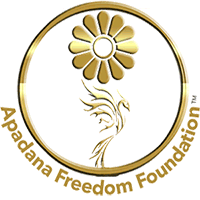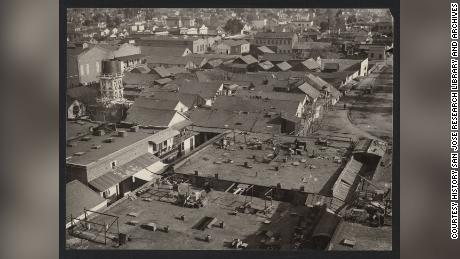“He was looking up and he could see smoke. The smoke… just covered the sky,” Young Yu said.
The arson fire which destroyed the neighborhood was just one of a shocking list of wrongs for which the city of San Jose formally apologized in late September, marking the first time in about 130 years the city has documented its historical role in passing anti-Chinese policies.
The apology and resolution, read by San Jose Mayor Sam Liccardo, came as the city looked for ways to respond to rising anti-Asian hate during the past year.
Reported hate crimes against Asians in 16 of the nation’s largest cities and counties increased 164% in May 2021, compared to May of the previous year, according to a study by the Center for the Study of Hate and Extremism at Cal State University-San Bernardino.
Through listening sessions in San Jose, community members raised an idea of reckoning with the city’s past.
“It’s a tremendous, tremendous feeling of justice,” Young Yu said.
Smoldering racism leads to arson
The apology and resolution describes a time when San Jose’s critical agriculture and railroad industries relied heavily on Chinese immigrant labor, while anti-Chinese conventions were held in the city.
It continues to list ways San Jose had played a role in anti-Chinese violence: the city had condemned all Chinese laundries, declared its Market Street Chinatown as a public nuisance, and when arsonists burned it down, refused permits for the Chinese to rebuild in another location.
Young Yu’s grandfather, Young Wah Gok, was part of the community. She told CNN he had immigrated to San Jose at age 11 from a village in Southern China, joining the Market Street Chinatown, a home base for Chinese immigrants.
Her grandfather had told her of his fun adventures, like when a gambler called him over to the table and said, “‘You pick out those numbers for me.’ Here he is, a kid who just arrived from China after a couple of weeks, and he picks out the winning numbers.”
But the stories of racism and harassment Young Yu later learned from her father: how her grandfather was chased by White boys in the neighborhood where he worked as a house boy, how rocks were thrown at him.
An atmosphere of hate was rampant, when the San Jose City Council condemned the Market Street Chinatown.
Young Yu said there were “people coming into Chinatown with I guess orders, saying you know you have two weeks. And there was this feeling already that the Chinatown… that they’d have to leave, but they always had the hope that they could fight this off. But I don’t think they expected a fire.”
A San Francisco Daily Examiner article about the arson fire called it “San Jose’s Joy” and a “gala day in San Jose.”
A photograph of the fire shows crowds gathered to watch. Another shows an aftermath of crumbled buildings as onlookers pass by. Young Yu said the water tower, which was always full, had somehow been emptied, making it near impossible to fight the fire.
“This was really a sense of doom. Because after the fire, then what? Are they going to come after the individual?” Young Yu said.
Rebuilding in an era of anti-Chinese policy
The Chinese immigrants in San Jose had an ally in John Heinlen, a German immigrant. Shortly after the fire, Heinlen helped the Chinese community rebuild on his property, an area which is now Japantown in San Jose.
But he was met with resistance from the city, who declared his requested permits “out of order.”
In fact, a protest erupted near his property, where a resolution drafted by the mayor and city council read a Chinatown would be “a public nuisance, injurious to private property adjacent thereto, dangerous to the health and welfare of all citizens who live and have homes in its vicinity, and a standing menace to both public and private morals, peace, quiet and good order, and etc.”
Despite vehement opposition, Heinlen finished construction on “Heinlenville,” San Jose’s final Chinatown, which lasted until 1931.
Events in San Jose weren’t isolated. During the 1870s, an economic depression in the U.S. prompted Chinese immigrants to become scapegoats. In October 1871, a mob of rioters in Los Angeles hanged 18 Chinese immigrants after one of them allegedly killed a popular saloon owner. In September 1885, White miners in Wyoming, led by the Knights of Labor, killed 28 Chinese people and wounded at least 15. And in November 1885, a mob of Whites in Tacoma, WA, led by the mayor and supported by the city police, invaded Tacoma’s Chinatown and ordered its residents out of the city.
All these events happened with the backdrop of the Chinese Exclusion Act of 1882, the first and only federal law to prevent a specific nationality of people from becoming U.S. citizens for more than half a century.
Because of the law, Young Yu’s grandfather never became a naturalized U.S. citizen. He was not allowed to do so until 1943, just a few years before his death.
Artifacts found a century later
About 100 years after the Market Street Chinatown arson, people beginning construction on the new Fairmont Hotel in San Jose discovered artifacts underground.
When toothbrushes, ceramic kitchenware and whiskey bottles surfaced, the Chinese Historical and Cultural Project was formed to house the items in a new museum.
Gerrye Wong, one of the organization’s co-founders, taught public school in California for 30 years but never found a mention of the anti-Chinese events in any text or curriculum about California history.
“I grew up in the city of San Jose, but I did not know anything about the five Chinatowns that stood here,” Wong said. “So finding pieces like this, it was just like opening a horizon of what was life like for those people.”
In 1991, the Chinese American Historical Museum opened, in a building designed to be a replica of the last-standing structure in Heinlenville called Ng Shing Gung. The original building was a school, a temple, a gathering place, and even a hotel for Chinese visitors who were not allowed to rent a hotel room elsewhere.
Ng Shing Gung is also mentioned in San Jose’s apology, as the city recognizes its role in destroying the structure and letting its ornate altar suffer damage, as it was stored outdoors under the Municipal Stadium for decades.
Wong’s father had tried to save the building in the 1930s.
But she said the city of San Jose “took it by eminent domain and destroyed the building, which was very crushing to my father,” Wong said. “But it was also a revelation to me, because how did I start thinking about building a replica of this building, not knowing that he had tried to save it 30 years before that?”
After painstaking restoration, the original altar now sits on the second floor of the museum. Wong said she enjoys showing the history to school children on field trips, which she was never able to do as a school teacher in a classroom.
Leadership sets the tone, then and now
Councilmember Raul Peralez, whose district includes the former Heinlenville, was not aware of the horrific details of the city’s past before this resolution, either.
As the city tried to grapple with rising anti-Asian hate emerging along with the coronavirus, “one of the things we wanted to do was just pull the community together and find out what more we could do to be able to provide some support, and specifically to make statements as a city as a local government here,” Peralez said.
And statements matter.
Peralez said the rhetoric of former President Trump during the pandemic emboldened people to act out in vicious anti-Asian attacks, both verbal and physical. Likewise, the leadership of San Jose in the 1880s, he said, set the tone for racist acts.
“We have to learn our history, right? Or we’re doomed to repeat it,” Peralez said.
With the apology officially on the city record, attention now turns to a development under construction on the land where Heinlenville once stood. In the center, will be a new Heinlenville Park.
Young Yu will be involved in developing medallions and plaques there, to explain what happened centuries before.
“It’s a sense of overcoming,” she said.













